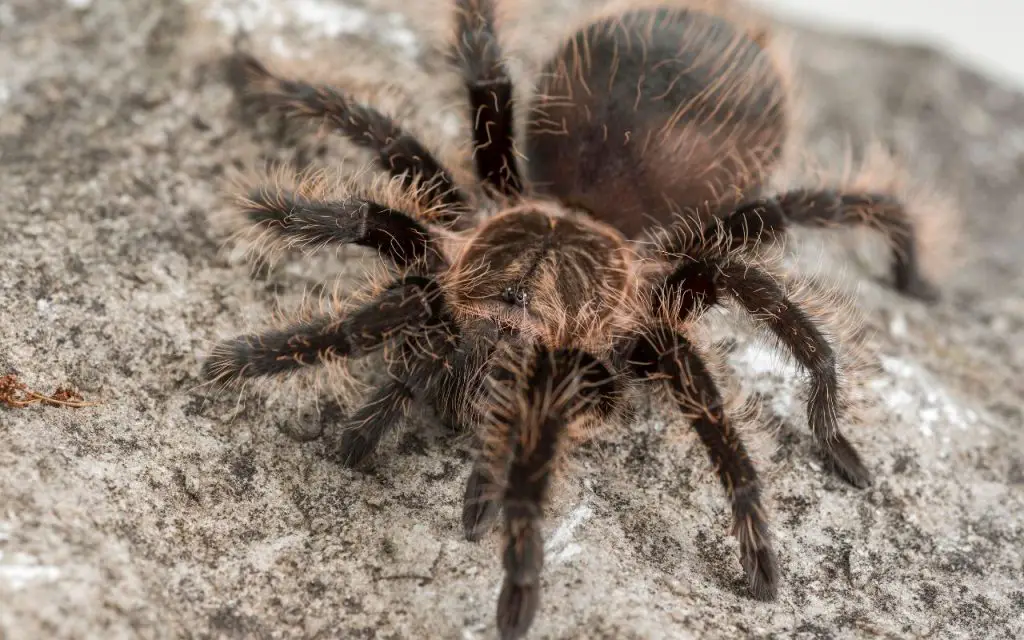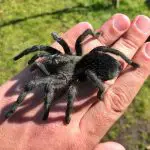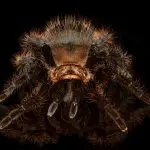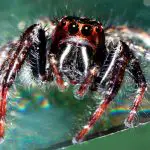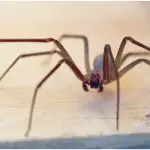Last updated on February 1st, 2023 at 09:58 am
If you’re considering buying one as a pet, you might be wondering: how big do Curly Hair Tarantulas get? In this article, we’ll discuss their size and other facts…
Curly Hair Tarantula is also called Wooly Tarantula. It is one of those easy pet spiders, which has easy care requirements (read our Curly Hair husbandry guide for more on this).
They are usually peaceful and non-aggressive. These spiders can attain a size of up to 6-inch in length, which includes their legs.
While these are certainly not the largest tarantulas you will come across, they can intimidate people not used to handle them. They always tend to look a little larger than they are due to their long, curly hairs.
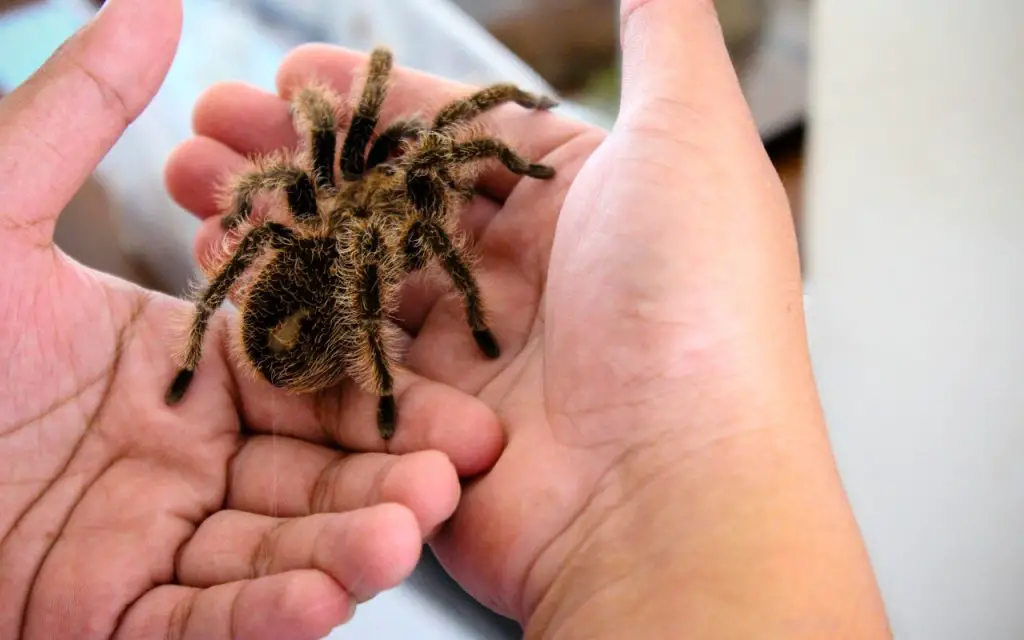
Curly Hair Tarantula size
Adult curly hair tarantulas can grow up to a height of five to six inches, including their legs. Their body is around 3-inch long.
Overall, they are a stocky, compact-looking species. Like other terrestrial and burrowing tarantulas, they are heavier-bodied than arboreal species.
How often should I handle my curly hair tarantula?
Many people recommend to keep a curly hair tarantula as a pet for beginners as they require very little space and small. They have docile temperaments and hardy nature, these spiders should be only handled once or twice every week or even for prolonged duration.
Curly hair tarantulas extract hair from their abdomens which irritates a person’s skin and may even cause damage when they get into a person’s eyes. Hence, we suggest washing hands properly and do not rub eyes, especially after you handle a tarantula.
Although curly hair tarantulas are usually docile, they might use a venomous bite as their defence mechanism. We advise you to keep your pet tarantula out of reach from other pet animals in your home.
You should also keep them away from the kids who might not handle them appropriately. You should be spending some hours every week to feed and clean your curly hair tarantula.
Curly Hair Tarantula male or female
Is it easy to tell the gender of a curly hair tarantula? In this section we will explain how to distinguish a curly hair tarantula from its female counterpart.
Typically, the female ones are bulkier and larger than the males. Are you planning to keep a curly hair tarantula as your pet for the first time?
If that is so or there is no spider of opposite gender to compare, sexing can be tough.
Female tarantulas feature wider chelicerae, fangs, or jaws as compared to males with respect to body size. There is an easy trick to find out the sex of your tarantula.
Gently flip it over to examine the abdomen. You would find a line known as an epigastric furrow on the abdomen.
Right above the line, you can also find a semi-circular or arched area. The area is called epiandrous fusillae, meaning that the tarantula is male.
If you wish to sex your tarantula early, you will have to take a closer look at the molted skin of the spider. Apply caution while smoothing out the skin on the abdomen of the spider.
You should tyoically find 4 white spots on the top of this region. These spots showcase the tarantula’ lungs’ discarded lining.
Ideally, you would find a crease between these spots. Does the crease feature a roundish bump coming out of it? Then you had been studying the female tarantula’s skin.
Such a bump is the spermathecae of the female where she stores the sperm of the male after mating. On the other hand, male spiders do not have this bump.
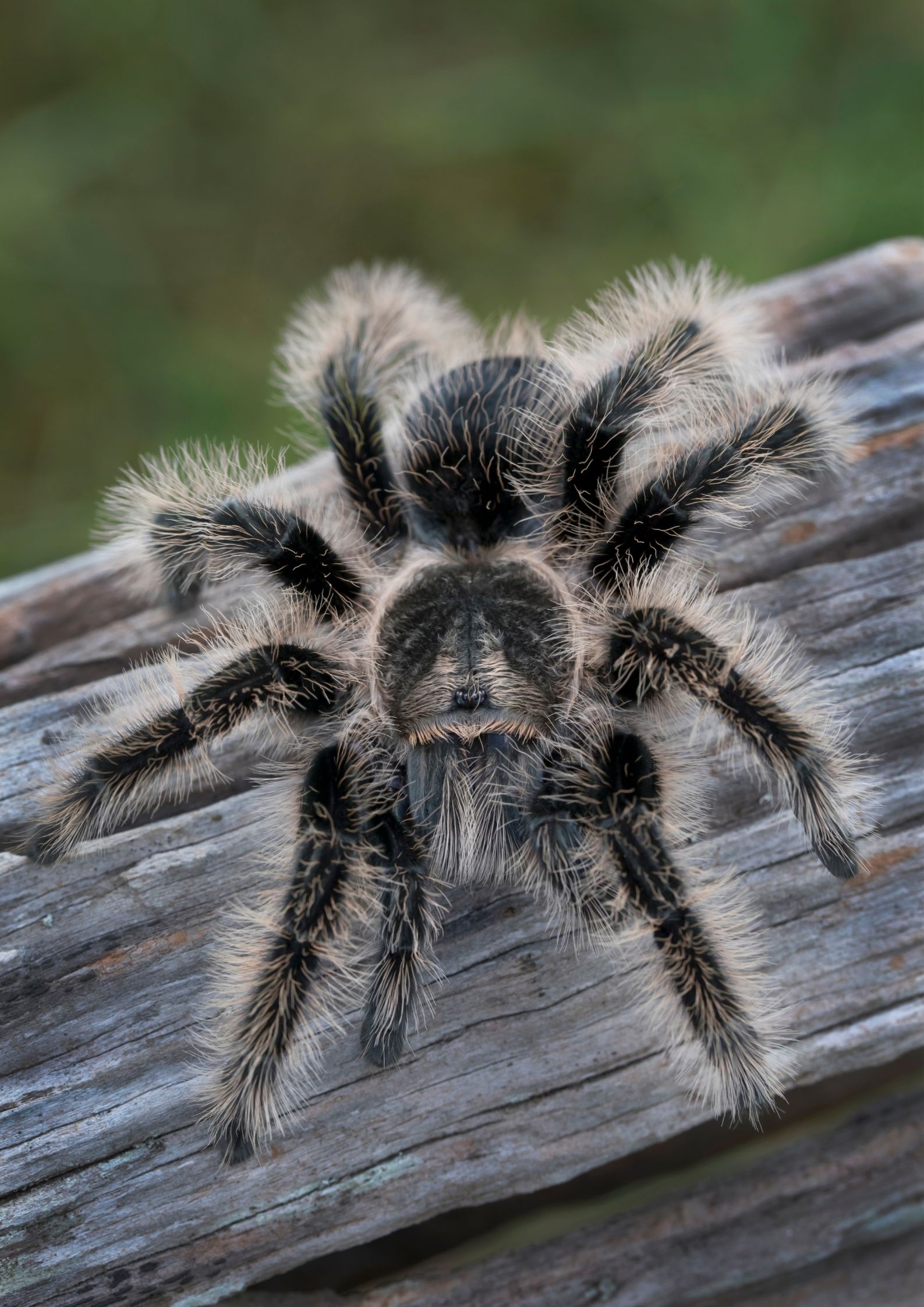
Do male curly hair tarantulas make webs?
While curly hair tarantulas make webs, they do not indulge in this activity to catch food. Instead, these spiders make webs before eating or molting.
The spiders also make webs to secure their habitat area and burrows. However, there is an exception as well, as some tarantulas do not make webs at all.
However, it is important to understand that male, as well as female curly hair tarantulas make webs. Both the genders possess the capabilities for web-spinning.
As such, you will notice similar construction traits between both genders. As male curly hair tarantulas can also spin sperm webs, you might also find that they are more skillful in making webs as compared to the female ones.
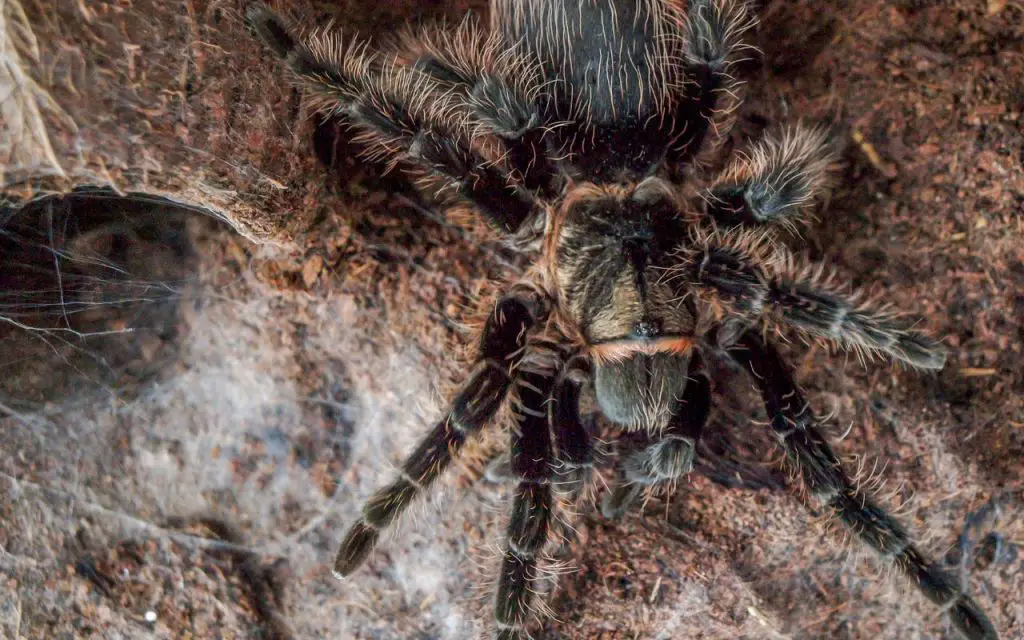
At what age can tarantulas be sexed?
Typically, we can see the sex on these spiders after the fifth or sixth Instar or molt. However, it is also imperative to note that species that they are slow in growing species.
For instance, a few Grammostola species would only begin showing their sexual organs once they grow up to six or seven cm irrespective of the number of molts or instars. The gender of spiderlings or slings or juvenile tarantulas is not possible to tell.
You have to wait till the time they have grown to a stage where there is proper development of their sexual organs. Thus, when you purchase a spiderling or a sling, there is a 50-50 likelihood of getting a female or male.
That is the season, several keepers prefer to purchase 2-3 slings of the species. They do it to improve the possibilities of getting a female or a male based on what they are wishing for.
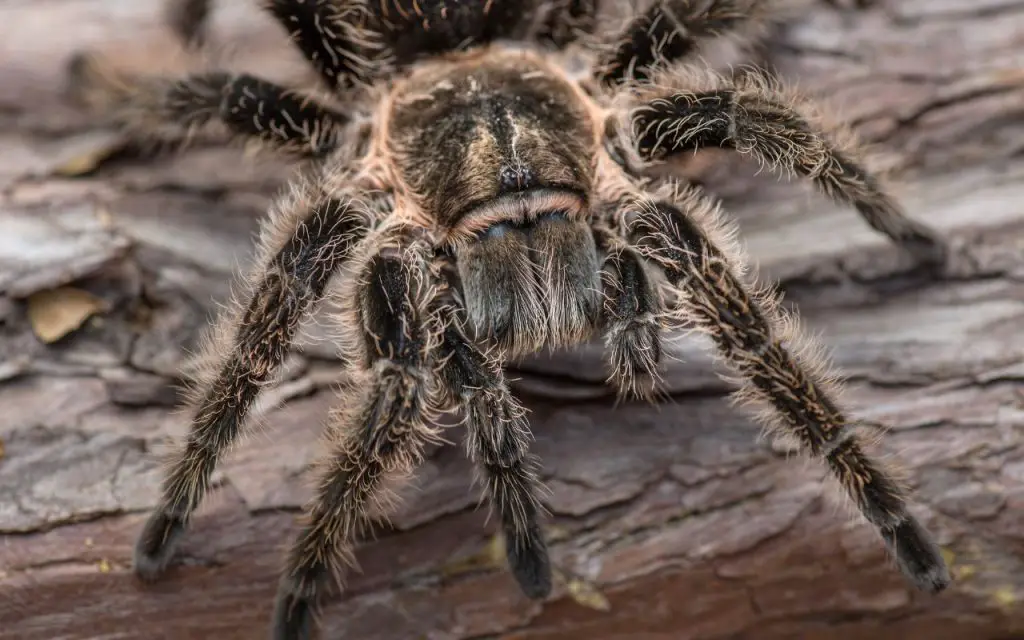
Vertical Sexing
Several people insist they have been successful in sexing a tarantula by watching it against the glass and from the outside. The phenomenon is called ventral sexing. Yet, we should apply caution to this.
There are some tarantulas that make it easy to figure out and learn. The following can symbolize a female or a male curly-hair tarantula:
- Angle and alignment of epigrastic furrow
- Book lungs
It is not that simple for all tarantulas apart from the technique being tough to master.
Molt or Exuvium Sexing
Examining the inside of a curly hair tarantula’s molt/skin or exuvium is the most precise way for sexing it. It is imperative to note that sexing an exuvium is easier on an older tarantula as compared to the younger one.
That’s because the young tarantulas might not have their sexual organs grown yet. Additionally, these organs might not be visible when they are too young.
Hence do not despair if you examine a young curly hair tarantula’s exuvium and cannot discover any symptoms of its gender yet. Simply wait till the next molt and inspect once again.
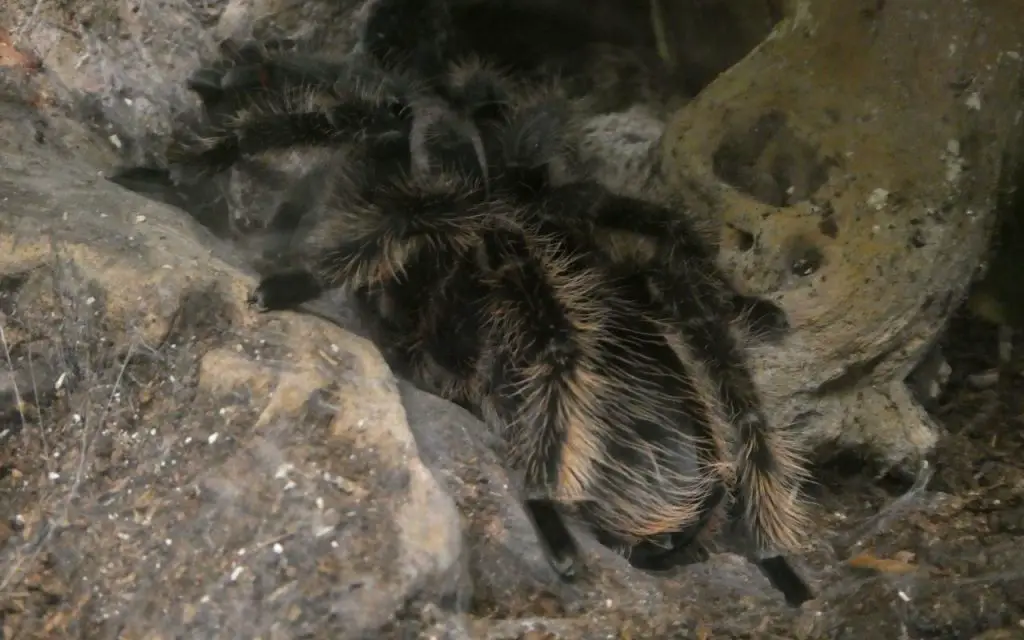
Curly Hair Tarantula growth rate
The growth rate of the curly hair tarantulas may indicate whether it is a female or a male. You need to remember that males usually grow much faster as compared to their female counterparts.
It is genetically programmed to make sure that there are male spiders available to mate with even mature females and ensure future offspring or progeny.
Many people opine that if one has slings of a specific species, which are from one hatch and some of these outgrow others, these could be males. At the same time, the theory is yet to be confirmed.

Curly Hair Tarantula tank size
A tank with a capacity of five to 10 gallons featuring a ventilated, secured lid is appropriate for the curly hair tarantulas. As these tarantulas are not big climbers, height is less important than ground space.
Typically, the tank’s width has to be approximately 2-3 times the spider’s leg span. Also, the length of the tank should be about 3 times its leg span.
Ensure that the tank’s temperature is in the range of 75-80 degrees Fahrenheit.
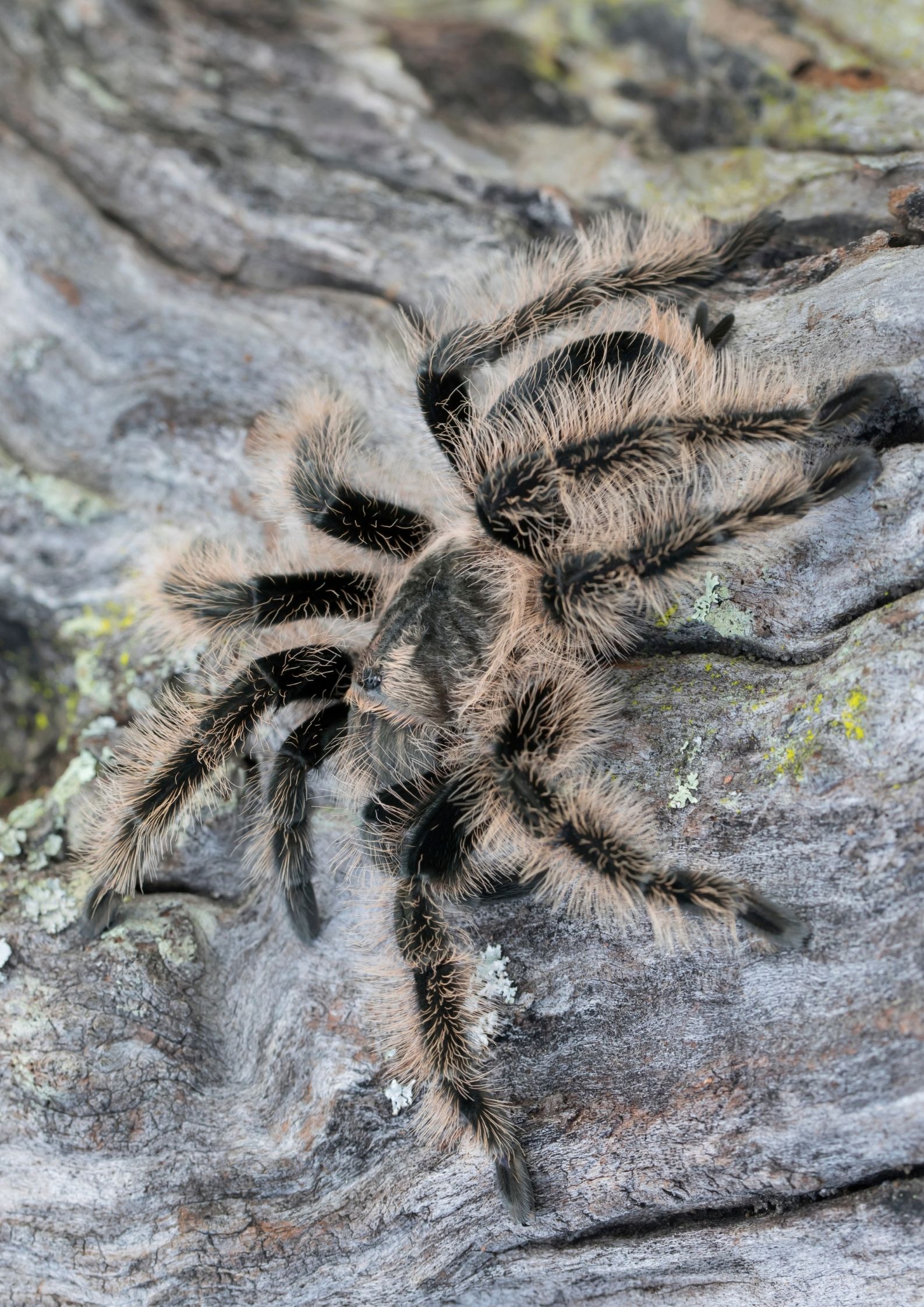
Does a Curly Hair Tarantula need a heat lamp?
Curly hair tarantulas do not need any heating lamps or Ultra-Violate lighting. Simply a day-night cycle. You need to be cautious about the enclosure of your spider so that it does not receive excessive sunlight.
After all, too much sunlight can shoot up the temperature rapidly leading to the cooking of the spider in its den. Keep a thermometer inside the enclosure and the temperature should be about 75 to 80 degrees.
You can accomplish this with a low waltage heat mat applied to one side of the enclosure in colder conditions.
How much substrate does a Curly Hair Tarantula need?
As the full-size curly hair tarantula is about 7-8 centimetre in length, a substrate of minimum three to six inches should be provided. These spiders are fond of burrowing so watch out for substrate, which facilitates this activity.
For instance, substrates like Eco Earth which retain shape can be a good option.
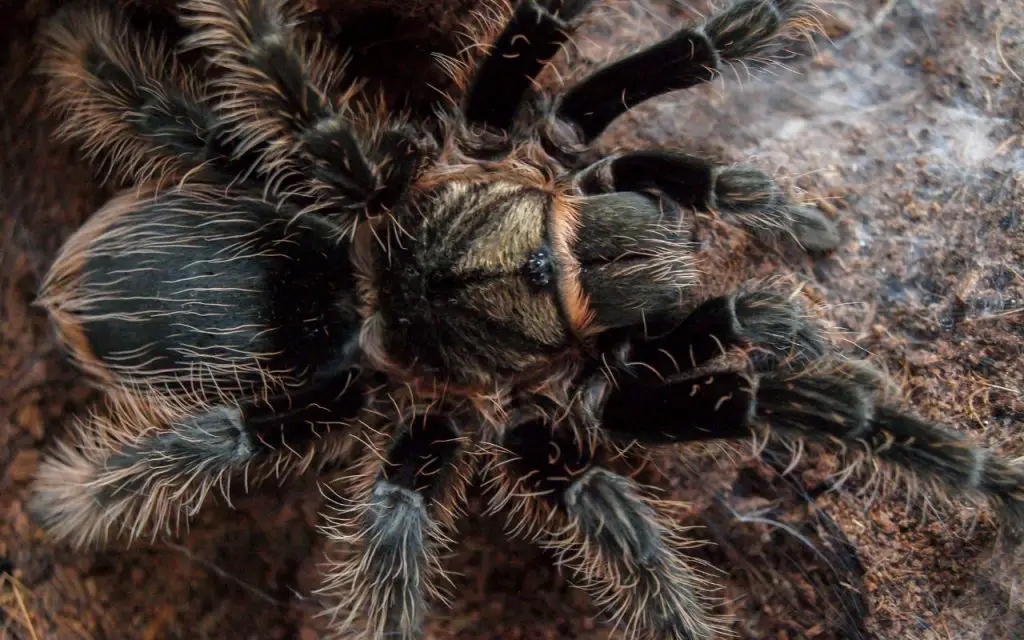
FAQ relating to how big Curly Hair Tarantulas get
Are curly hair tarantulas fast growing?
Yes, curly hair tarantulas have a fast growth rate. They attain their full-size after two or three years for a female, but as fast as one and a half years for males. In general, most other species of tarantula grow slower. That said, Curly Hairs a slightly shorter lifespan, often only living 8-10 years in captivity.
Can you hold a curly hair tarantula?
These spiders are easily spooked. As such handling should be minimum. However, they would not mind sitting a person’s arm or hand when they are handled gently and calmly.
We suggest you to sit on your floor while handling these spiders so that they are not afraid. Even a fall from a low height can kill or injure them.
How venomous is a curly hair tarantula?
A curly hair tarantula is venomous though it has mild venom. The venom is not harmful to mankind and these spiders rarely bite. More often than not, they will kick hairs at you if you annoy them, rather than bite.

